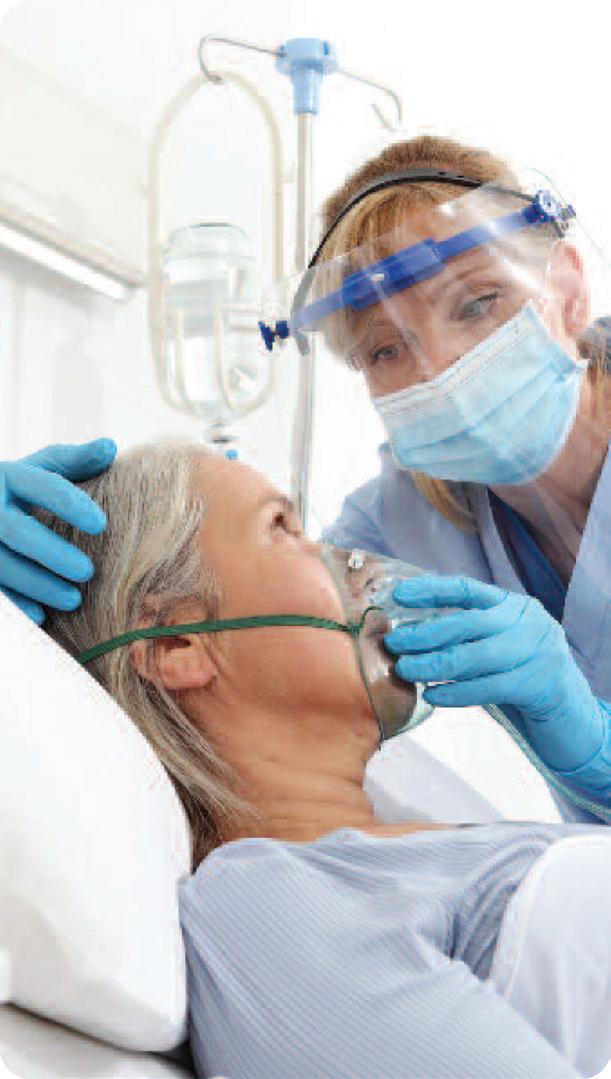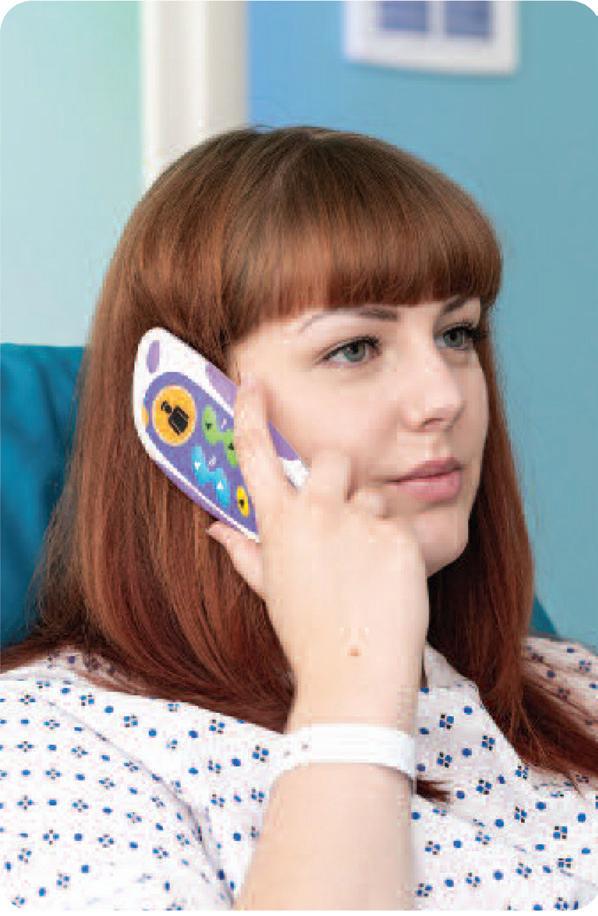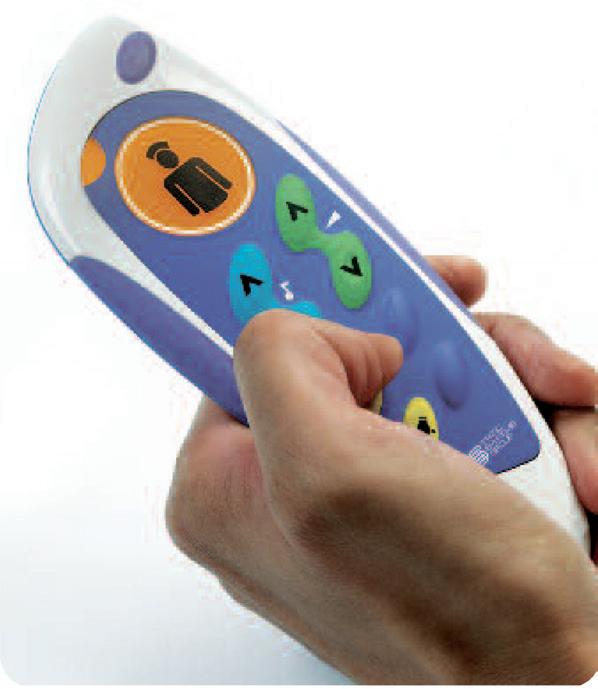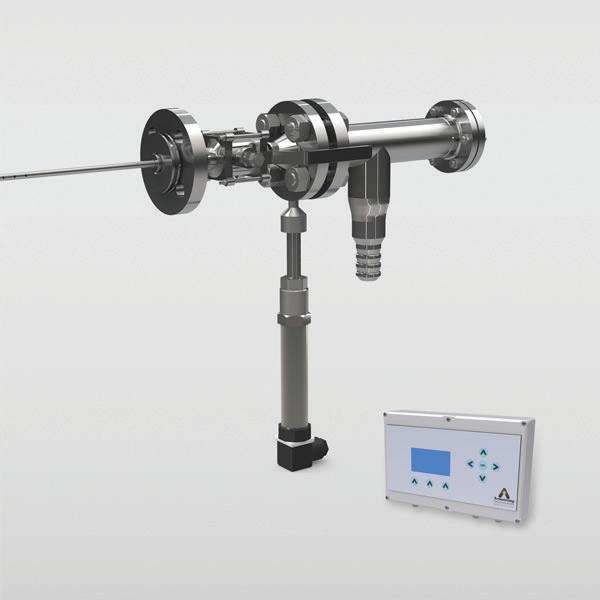
8 minute read
Shifting role of nurse call solutions during COVID
Matt Wakelam, senior healthcare solutions manager at Static Systems Group, explores the ways in which the COVID-19 pandemic has stimulated more sophisticated ways of working and led to far greater recognition of the many benefits delivered by advanced nurse call technology.
Digitalisation is changing the face of healthcare, and, through necessity, the COVID-19 pandemic has encouraged greater acceptance of the digitally- enhanced hospital, allowing transformation to take place more quickly than would have been the case in normal times. The pandemic saw Static Systems Group (SSG) work in close collaboration with numerous clinical teams throughout the UK and overseas to help hospitals embrace the full functionality of nurse call – far beyond patient-to-staff communication.
By developing innovative solutions and integrating critical alarm and patient-to- staff communication with other advanced healthcare technology, we have not only helped healthcare providers to reduce the exposure between COVID-positive patients and care teams but have, at the same time, assisted hospitals in enhancing workflow efficiency through improved communication and collaboration across the clinical space.
One interesting example of this has been the acceptance of speech communication available with our systems to help reduce the risk of infection transmission. The benefits of two-way communication between patients and clinical staff During the early stages of the pandemic, for example, we were approached by a UK-based NHS Trust with whom we have a longstanding relationship. We were tasked to help reduce the exposure between COVID-positive patients and care teams in one of the Trust’s hospitals. We enabled the nurse call speech facility, connected it with the existing
telephony system and provided staff with ‘hands- free’ devices. This meant that prioritised and triaged events were sent directly to staff - allowing alerts to be received at any location. It also meant two-way voice communication between staff and patients was made possible – allowing conversations to take place and assessments to be made without the need to approach the patient bedside. Reducing the risk of transmission The amount of repeat visits to a patient for a single call was consequently reduced as by talking with the patient in advance, staff were able to check which supplies or information were required prior to attending the bedside. By minimising the amount of time spent in the patient’s room, the risk of The COVID-19 pandemic has stimulated more exposure and transmission of the virus was sophisticated ways of using advanced nurse much lower. call technology. Furthermore, the amount of PPE being used was reduced as it was only now being used when it was necessary to enter the patient room and not for every query. In addition, the hands-free and touch-screen intercom options offered by our nurse call systems proved to be particularly valuable when used within the hospital’s isolation rooms, with touch- screen intercoms located outside each room. Having a two-way speech facility also delivers benefits for COVID-positive patients as - even when being cared for in isolation - patients can quickly and easily speak to those responsible for their care and receive reassurance, making them feel less isolated. By integrating our nurse call systems

with other facilities such as lighting, blinds, heating and entertainment, we are able to make patients feel more in control of their immediate environment. This can have a positive impact on patients who are facing a prolonged and difficult period in hospital.
Taking these steps on this particular project significantly reduced the risk of infection transmission and increased the safety of both patients and staff. The same can be said of another project we worked on during the pandemic where two-way voice communication was specified as an essential component of the chosen nurse call solution. This project was for the design, installation and commissioning of a nurse call system for North Lantau Hospital Hong Kong Infection Control Centre (HKICC), a temporary isolation hospital funded by the central government for treating COVID-19 patients in the Hong Kong Special Administrative Region.
The hospital covers a land area of 30,000 square metres and comprises six inpatient buildings, a medical centre and other facilities. It is capable of providing 136 wards and 816 negative pressure beds.
Its design is in line with the standards required for a permanent structure. To build a hospital of this scale in Hong Kong would normally take four years, however, with new building technology and construction going on around the clock, the project was completed in just four months.
In order to assist the hospital in achieving its vision, the nurse call system SSG recommended included a patient- tostaff speech facility at each bedside, offering all the benefits highlighted above in the UK-based project.
Furthermore, at HKICC, the patient hand units we supplied contain a silver- based antimicrobial agent, which is incorporated during the manufacturing process to help further strengthen the infection control measures instigated by the hospital. Importantly, the active agent will not degrade over time and can be cleaned with a sterilising wipe to eliminate biohazards and reduce cross-infection risks between users.
Incorporating speech allows assessments to be made without the need to approach the patient bedside.
Reducing alarm fatigue and cognitive overload The COVID-19 pandemic has placed care teams globally under unprecedented levels of pressure and has drawn attention to the many interruptions and events that are simultaneously clouding the clinical space. Patient hand units contain a silver-based While communication between patients antimicrobial agent to help further strengthen and care teams is a fundamental aspect of the infection control measures instigated by the hospital. every healthcare setting, it can also prove disruptive if clinical staff are frequently notified of events relating to patients whose care they are not responsible for. If clinical staff are exposed to an excessive number of alarms, it can result in sensory overload, desensitisation to alarm sounds and an increased rate of missed alarms. Commonly referred to as ‘alarm fatigue’ or ‘cognitive overload’, it can ultimately put patient safety at risk. Conclusion

Throughout the COVID-19 pandemic, many hospitals have benefitted from enabling two-way speech, but thanks to the interoperability between systems, trusts have also reaped the benefits of improved communication and collaboration between individual team members and between different clinical teams.
The latest nurse call devices allow individual clinical staff and different care teams to talk to and message each other directly, which can lead to improved communication. However, when you add in logic-based automation the solution becomes even more powerful - automating or smartening up interaction between different parts of the clinical space.
By using logic, nurse call events can be processed independently or with information gathered from multiple systems to create intelligent alerts and automated actions or responses. Once the events are being automatically triaged, we can then look at how different parts of the clinical space collaborate or communicate with each other.
The goal is to create a unified approach to prioritising and delivering alerts as this will help to create consistency in the way care teams respond to events and provide staff more time to care.
Nurse call solutions can play a vital role in helping to reduce alarm fatigue and alleviate cognitive overload in clinical environments – and have done so throughout the COVID-19 pandemic when care teams have faced unparalleled levels of stress.
By automatically triaging and prioritising events so that the event details are only sent to those staff members that need to be aware of them, communication between patients and
care teams can be made easier. With events only sent to the relevant staff member, they can then automatically clear the events from their body-worn notification devices as soon as they are dealt with.
As a result, staff are only presented with active events that are both ‘live’ and intended for them. This not only has the instant effect of reducing alarm fatigue and cognitive overload, but it also means that all the events are logged and can be guaranteed a response.
Reducing alarm fatigue and alleviating cognitive overload will continue to be a significant challenge for trusts, and one which must be addressed in order to avoid clinicians becoming overwhelmed and, in the worst-case scenario, missing a potentially clinically significant event.
How we automate, collaborate and communicate within the clinical space will only continue to evolve, with AI at the forefront of future developments, and we are proud to be playing our part in developing intelligent solutions for the future. We anticipate even more widespread adoption of innovative and sophisticated technologies, as well as more examples of integration with other clinical systems and building services
Matt Wakelam
Matt Wakelam is senior healthcare solutions manager at Static Systems Group (SSG). Matt joined SSG as a technical apprentice in 2001 and, following completion of his apprenticeship, became a technical support engineer. While supporting UK and global clients, he gained an in-depth knowledge of a broad range of technologies and systems in use within the clinical environment. He progressed through the company to his current role. Matt has been instrumental in developing systems and solutions that have even greater potential to improve patient and staff safety and collaboration through automated alerts, alarms and enhanced workflows using integration. He is passionate about the integration of clinical systems, removing system boundaries and providing clinicians with the information they require directly to their fingertips, thereby maximising the time available to spend in direct care of patients.
First published in the 2022 IFHE Digest
STEAM QM®-1 AUTOMATIC STEAM QUALITY MONITORING
Steam quality plays a crucial role in the sterilization process, so it is essential for patient safety and reducing hospital-acquired infections. Quicker and consistently more reliable and accurate than manual methods, Steam QM®-1 provides continuous steam quality measurement data trending over time. By automatically detecting the dryness fraction of steam entering autoclaves, Steam QM®-1 enables you to maintain the steam quality necessary to ensure proper sterilization. Steam QM®-1 helps prevent pitting of instruments as well as dangerous wet packs that can stop or delay surgery, costing hospitals and physicians time and money and creating an infection risk for patients.














